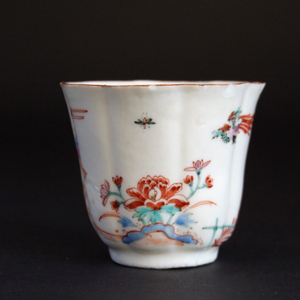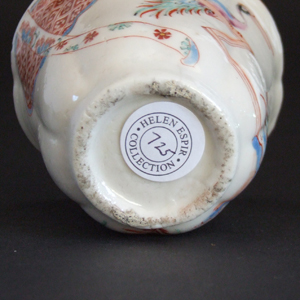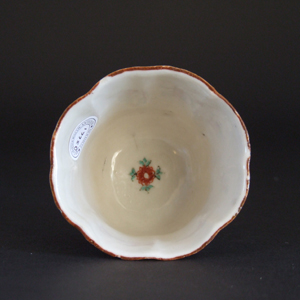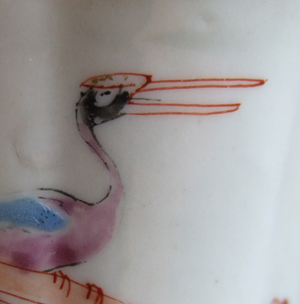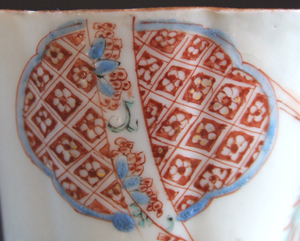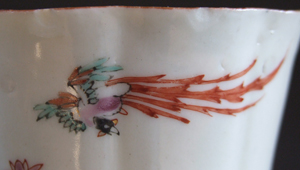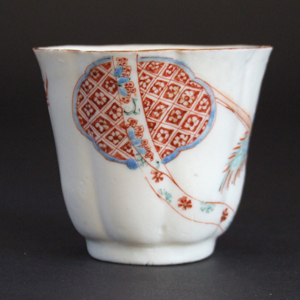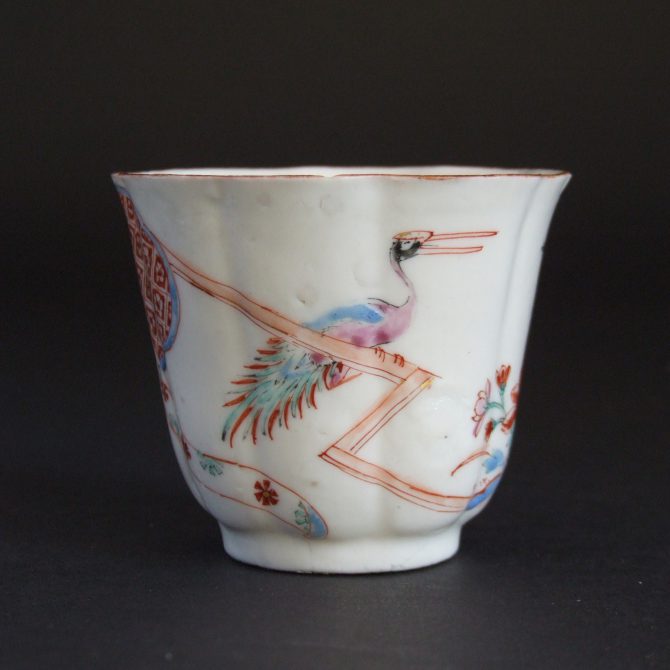
KANGXI 1662 – 1722 Chinese Porcelain Decorated in Holland
A Rare Early Dutch Decorated Kangxi Blanc de Chine Porcelain Beaker in the Kakiemon Style. The Octafoil Tall Moulded Beaker is from Dehua in Fujian Province, Kangxi Period 1662-1722. Painted in Holland c.1720 Using a Mixture of Purple, Blue, Turquoise, Iron Red and Gilding in the Kakiemon Style with a Seated Crane, a Flying Phoenix, Flowering Plants and Brocade Patterns. Other Beakers of this Type are Known and they are Sometimes Referred to as being by the `Pink Crane Painter`, See Bonham`s Catalogue Notes Below.
SOLD
- Condition
- Numerous flakes and small chips to the rim.
- Size
- Height : 6 cm (2 3/8 inches)
- Provenance
- Bernard Watney The Watney Collection of Chinese Porcelain Decorated in Holland and England, Bonham`s London, 7th November 2003, lot 19 (one of two beakers). The catalogue entry note "several octagonal beakers with Dutch enamelling, inspired by Japanese porcelain, were exhibited at the British Museum`s East Meets West seminar (it was in fact an O.C.S. seminar at the British Museum), fig. 10, 30 and 42. The bird-decorated beaker in this lot includes a panel of red diaper pattern. Similar patterns occur on other pieces by the so-called `Pink Crane Painter`, see Susan Miller "Europe`s Enamellers : Creating China for the West, O.c>s. Transactions, 2000-1, p. 154. E & H Manners, Park Lane Ceramic Fair 11th June 1999. The Helen Espir Collection of European Decorated Chinese Export Porcelain : "a member of the Oriental Ceramic Society and collector, with her husband. Having made a typical collection of Song and provincial Ming blue and white, they decided to concentrate on what used to be called `clobbered` porcelain. She is the author of the standard work on the subject, European Decoration on Oriental Porcelain,2005, the first to examine the work of European decorators on Chinese porcelain throughout the eighteenth and nineteenth centuries, focusing on enamellers in Holland, Germany and England. She has learned Chinese." From Provenance ; Collectors, Dealers & Scholars : Chinese Ceramics in Britain & America (Roy Davids, Dominic Jellinek, Privately Printed, 2011. ISBN 978-0-9570148-0-0).
- Stock number
- 23661
Information
Blanc de Chine Porcelain :
The porcelain known in the West as Blanc de Chine was produced 300 miles south of the main Chinese kiln complex of Jingdezhen. The term refers to the fine grain white porcelain made at the kilns situated near Dehua in the coastal province of Fujian, these kilns also produced other types of porcelain. A rather freely painted blue and white ware, porcelain with brightly coloured `Swatow` type enamels as well as pieces with a brown iron-rich glaze. However, it is the white Blanc de Chine wares that have made these kilns famous. The quality and colour achieved by the Dehua potters was partly due to the local porcelain-stone, it was unusually pure and was used without kaolin being added. This, combined with a low iron content and other chemical factors within the body, as well as the glaze, enabled the potters to produce superb ivory-white porcelain. White porcelain was made at the Dehua kilns from early times, some books refer to the white porcelain produced during the Yuan period as being Blanc de Chine, but I think it is not really until the latter stages of the Ming dynasty, during the late 16th century, that a porcelain with clearly recognisable Blanc de Chine characteristics was produced. There is a theory that there was a brake in production during a large part of the 18th century. I am highly sceptical of this, it seams likely that Blanc de Chine porcelain was made all the way through, uninterrupted from the Ming dynasty to the present.
